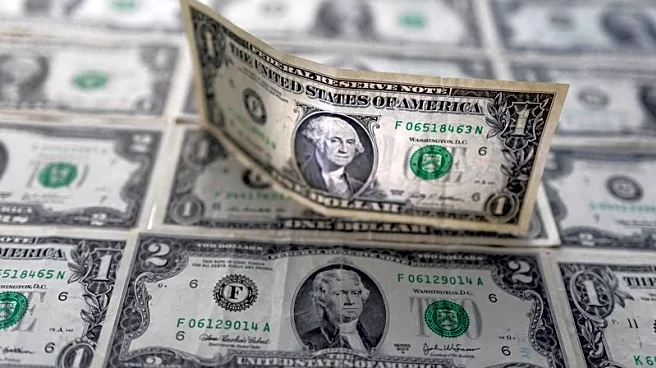What's Happening?
The U.S. dollar has reached a near three-month high against the euro, driven by investor uncertainty regarding future Federal Reserve rate cuts. Last week, the Fed reduced interest rates by 25 basis points,
but Chair Jerome Powell indicated that this might be the last cut for the year, citing the need for a clearer economic picture. The ongoing U.S. government shutdown is expected to delay key economic data releases, including the nonfarm payrolls report. As a result, investors are focusing on alternative data sources such as the ADP employment report and ISM PMIs to assess the economy's health. The euro has fallen to its lowest level against the dollar since August, while the yen remains under pressure due to interest rate differentials.
Why It's Important?
The strength of the U.S. dollar has significant implications for global trade and investment. A stronger dollar can make U.S. exports more expensive and impact the competitiveness of American companies abroad. Additionally, the uncertainty surrounding future Fed rate cuts adds to market volatility, as investors adjust their expectations based on limited economic data. The situation highlights the challenges faced by central banks in managing monetary policy amid incomplete economic information. The dollar's performance also affects currency markets worldwide, influencing exchange rates and international financial flows.
What's Next?
Investors will be closely watching upcoming data releases, such as the ADP employment report and ISM PMIs, for insights into the U.S. economy. The resolution of the government shutdown is crucial for the resumption of regular economic data releases, which would provide a more comprehensive view of economic conditions. Additionally, the Federal Reserve's next policy meeting will be a focal point, as officials debate the need for further rate adjustments. Market participants will also monitor global economic developments and their potential impact on currency markets.












